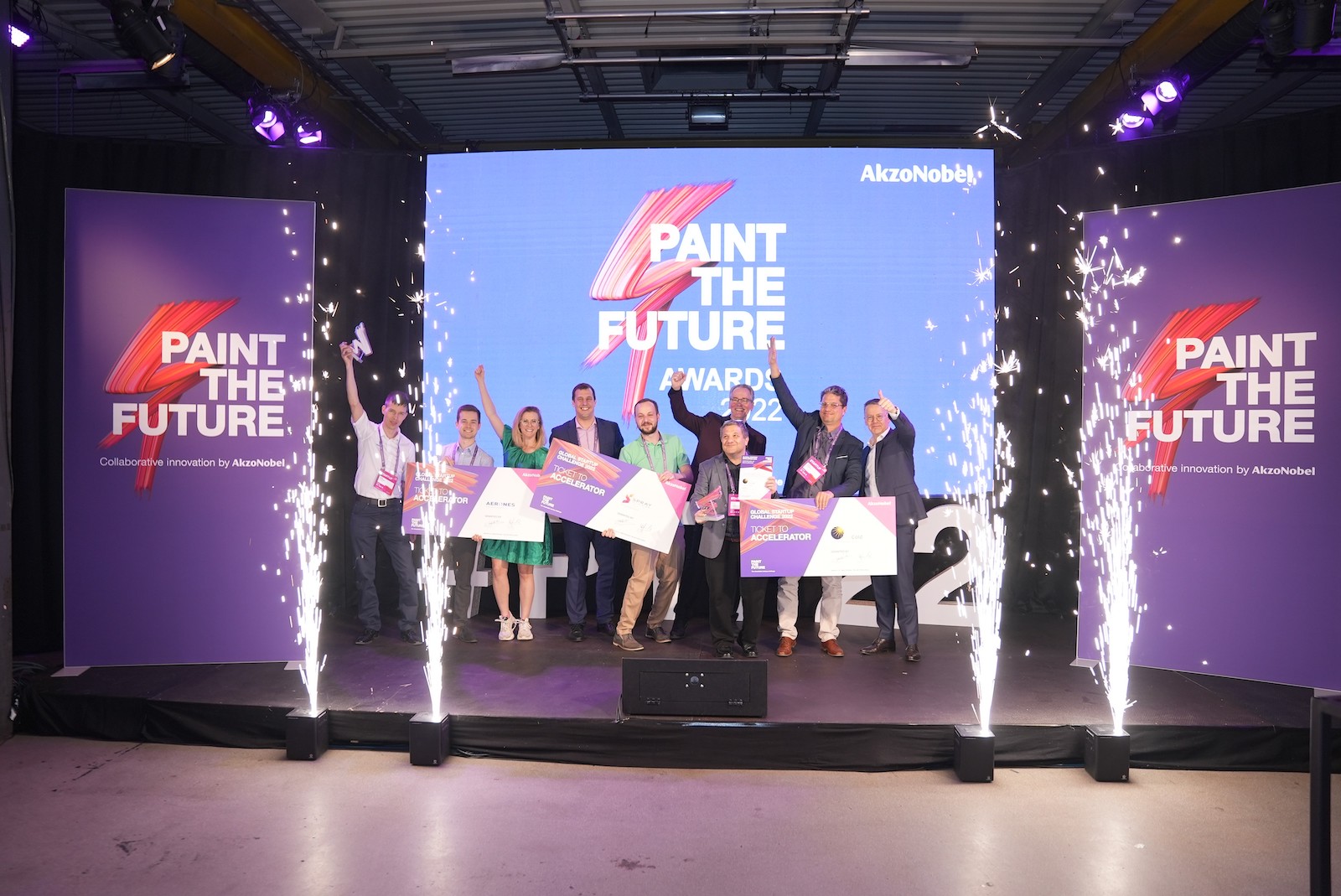You can almost always find yourself within touching distance of a paint or coating. For example, on consumer electronics, vehicles, batteries, furniture and buildings. The future demands more sustainable solutions and new ways of working from us. By delivering specific functionalities like heat absorption or special protection, our solutions are often an enabler for sustainability. Moreover, we are working hard designing coatings that are based on bio-based or other new materials.
To make these developments possible, we need to innovate in collaboration within our whole value chain – from start-up to bulk raw material producer and from science to applied technology. That is why we launched our Paint the Future initiative.

Shaking up the mix
We are convinced that there is huge potential in open and collaborative innovation, just waiting to be explored and nurtured. Our Paint the Future programme has already resulted in a number of exciting new partnerships with start-ups in and outside our sector, while at the same time strengthening our existing links with universities.
It is amazing to see how unexpected combinations – with start-ups that come from a completely different background – can end up providing additional functionalities for our product.
With Aerones we are working on a robotic solution to wind turbine maintenance. With Alucha we are recycling paper sludge as an ingredient for paint. With Les Companions we are testing a painting robot for interior walls.
Together, we accelerate the most promising sustainable solutions, where AkzoNobel as a multinational can provide expertise to help start-ups grow and gain market access.
Challenging the value chain
Involving our customers and suppliers is an equally important way to support implementation of new and more sustainable technologies. Achieving decarbonisation is a driving force behind our Collaborative Sustainability Challenge. Together with our extended value chain, we identify hacks to overcome implementation barriers. Policymakers have an important role to play as well – stimulating a common understanding of the value chain challenges and acting as a facilitator and regulator.
Pooling resources for the biggest steps
In research between industry and universities, it is important to find the best mix of science and applied research. EU and Member State funding has been instrumental in bringing together European partners (companies, academia, institutes) to work on sustainable solutions.
With the Advanced Research Center Chemical Building Blocks Consortium (ARC CBBC) in the Netherlands we are working on new ingredients and functional materials. With the HorizonEurope project Envision, energy is harvested from building surfaces by absorbing infra-red light. And with The Clean Sky 2 Ecotech project we enhance introduction of chromate-free treatments and primers for aerospace.
Now we need to ensure public support doesn’t stop there but is extended to bringing products to market and finding additional European partners.
A better European blend?
In order to further strengthen European innovation in the area of paints and coatings, and harvest all the benefits of collaborative innovation, we need the public sector to increase their involvement as partners in the value chain.
Public involvement in the search for new sustainable (raw) materials is crucial to taking the first step toward decarbonisation of materials.
Furthermore, public involvement will be vital to help bring sustainable solutions to the market, by addressing barriers to implementation. Together we can paint the future!

